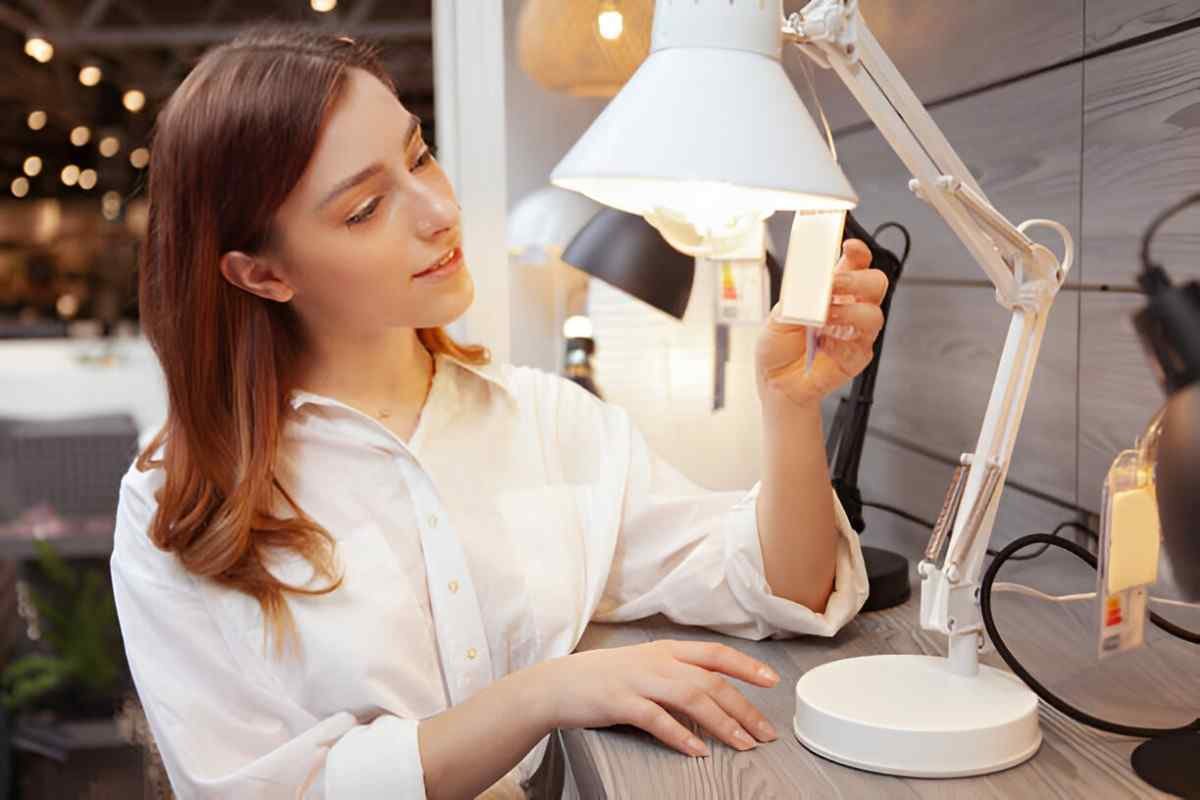Setting up a home office can be an exciting project, but it comes with its challenges, especially when it comes to lighting. I’ve spent a lot of time trying different lighting solutions to find the perfect setup that boosts my productivity and helps me feel comfortable during long working hours. Lighting is not just about illumination; it affects our mood, energy levels, and even our health. In this guide, I will walk you through everything you need to know about home office lighting, from understanding the types of lighting to the best products you can consider for your space.
Table of Contents
Why Home Office Lighting Matters
Before diving into the specifics of lighting types and options, let me explain why home office lighting is essential. We spend hours in our workspaces, often under artificial lights. Poor lighting can lead to eye strain, headaches, and even disrupt your sleep cycle. On the other hand, proper lighting can improve focus, enhance your productivity, and create a comfortable atmosphere for working.
There are a few things I’ve learned about good lighting:
- Natural light is king – If you’re fortunate enough to have a workspace near a window, you already have a head start. Natural light has been shown to improve mood and reduce stress.
- Layered lighting – Instead of relying on just one light source, layering multiple light types (ambient, task, and accent) will provide more versatility.
- Avoid glare – Positioning your light sources correctly can prevent glare on your screens, which is a common cause of eye strain.
Types of Home Office Lighting
Lighting can be broken down into three main types: ambient, task, and accent lighting. Each of these plays a role in creating a well-lit and functional workspace.
1. Ambient Lighting
This is the general lighting that fills the room. Ambient lighting should be bright enough to let you move around comfortably without straining your eyes. It’s the base layer of your lighting setup.
The best ambient lighting will come from overhead fixtures such as ceiling lights, chandeliers, or recessed lighting. However, if you want something a bit more flexible, consider adjustable floor lamps or desk lamps with dimming options.
2. Task Lighting
Task lighting is meant for specific activities like reading, writing, or working on a computer. These lights should be bright but not too harsh, as you need them to focus on your work without straining your eyes. Desk lamps are the most common form of task lighting, but there are other options like under-cabinet lighting or clip-on lights.
For example, I use a desk lamp with an adjustable arm so I can direct the light where I need it the most. It makes a significant difference in reducing the glare on my screen and provides a better focus area.
3. Accent Lighting
Accent lighting is used to highlight specific areas or add visual interest to the space. This could be a decorative light or a picture light. It’s not essential for the functionality of the workspace, but it can make the environment more aesthetically pleasing.
If you’re going for a cozy, inviting atmosphere, accent lighting can be an excellent choice. For instance, I use a small, decorative LED light strip behind my monitor to add a warm glow around my workspace.
Factors to Consider When Choosing Home Office Lighting
Several factors influence the type of lighting you need for your home office. Here are some of the most important ones that I consider when shopping for lighting:
1. Size of Your Office
A larger space will require more lighting to ensure that the entire area is properly lit. For small spaces, a single desk lamp may suffice, but for larger offices, you’ll need a combination of ambient, task, and accent lighting to ensure proper coverage.
2. Lighting Color Temperature
Lighting comes in different color temperatures, measured in Kelvins (K). Generally, the lower the number, the warmer the light. A light with a higher Kelvin rating will produce a cooler, bluish light.
- Warm light (2700K to 3000K) – This type of light is cozy and relaxing, perfect for a bedroom or living room but not ideal for workspaces.
- Neutral light (3500K to 4100K) – Neutral lighting is closer to daylight, making it a great choice for most home offices.
- Cool light (5000K to 6500K) – This lighting mimics daylight and is excellent for tasks that require focus and concentration, such as reading or working on a computer.
I’ve found that a neutral light works best in my office. It’s bright enough to keep me awake and focused but still soft enough to avoid feeling too harsh.
3. Brightness and Light Levels
The brightness of a light is measured in lumens. You need to balance brightness to avoid eye strain but also ensure that your space is lit enough for the tasks you need to complete. As a rule of thumb, aim for around 50 to 75 lumens per square foot for a comfortable workspace.
For example, if you have a small desk, a lamp with around 500 lumens should be enough. Larger offices may require overhead lighting with a higher lumen count.
4. Energy Efficiency
Energy-efficient lighting, such as LED bulbs, can save you a lot of money in the long run. LEDs consume less power and last longer than traditional incandescent bulbs. I’ve made the switch to LED lighting in my office, and I’ve noticed a significant reduction in my energy bills.
5. Adjustability
When selecting lighting, adjustability is crucial. Being able to dim lights, change their angle, or switch between warm and cool settings makes a big difference. I love my adjustable desk lamp because I can control the brightness and position of the light depending on what I’m doing.
6. Design and Aesthetics
Your home office should reflect your style, and lighting plays a significant role in the overall look. Whether you prefer sleek, modern lighting fixtures or vintage-inspired designs, there are plenty of options available. I opted for a minimalist desk lamp with a clean design that complements my office decor.
Comparison Table: Lighting Options for Home Offices
Here’s a comparison table that highlights the features of different lighting options for your home office:
| Lighting Type | Pros | Cons | Best For |
|---|---|---|---|
| Ceiling Light | Provides even ambient light, covers a large area. | May not provide enough task lighting for specific tasks. | Larger offices, general lighting |
| Desk Lamp (Adjustable) | Provides focused light, adjustable brightness and angle. | May take up desk space, not suitable for larger areas. | Task lighting, small offices |
| Floor Lamp | Can be positioned anywhere, great for larger spaces. | Takes up floor space, may not be as adjustable. | Larger rooms, ambient light |
| LED Strips | Flexible, energy-efficient, great for accent lighting. | May not provide enough focused light for tasks. | Accent lighting, mood setting |
| Clip-on Light | Compact, versatile, can be placed anywhere. | Limited light coverage, might not be adjustable. | Task lighting, small spaces |
| Under-cabinet Lighting | Provides discreet task lighting, energy-efficient. | Needs installation, may not cover large areas. | Task lighting for desks and shelves |
Best Lighting Products for Home Offices
Now, let me share a few of my favorite lighting products that have made a noticeable difference in my home office setup. These lights have been selected based on their functionality, design, and overall value.
1. BenQ e-Reading LED Desk Lamp
This desk lamp is designed for long hours of reading or working on a computer. It offers a wide light coverage, adjustable brightness, and color temperature, making it perfect for desk work. The auto-dimming feature is a plus, adjusting the brightness based on ambient light levels.
2. Philips Hue White and Color Ambiance Lightstrip
If you’re looking for something to add an accent to your workspace, the Philips Hue lightstrip is a fantastic option. It’s flexible, can be installed almost anywhere, and offers a wide range of colors to suit your mood or style.
3. TaoTronics LED Desk Lamp
This lamp has a modern design and provides five different color modes and seven brightness levels. It’s great for task lighting, and its sleek design fits perfectly into most home office setups. Plus, it’s energy-efficient and durable.
4. LIFX Mini Day & Dusk Smart Light Bulb
If you want to take control of your office lighting remotely, these smart bulbs are a great option. You can adjust the brightness and color temperature with your phone or voice assistant, giving you flexibility depending on the time of day or your work requirements.
5. Ikea RANARP Pendant Lamp
For a more industrial look, this pendant lamp from Ikea provides ample light and has an adjustable cord for customization. It works well as ambient lighting, especially if you have high ceilings or want to create a statement piece in your office.
Conclusion
Choosing the right lighting for your home office can seem overwhelming with all the options available. However, by understanding the different types of lighting, their benefits, and the factors that affect your workspace, you can make an informed decision. Whether you’re looking for energy-efficient LED options, adjustable desk lamps, or accent lighting, the key is to find the perfect balance between functionality and aesthetics.
In my experience, a layered approach to lighting, combining ambient, task, and accent lighting, creates the most comfortable and productive workspace. The right lighting not only enhances the functionality of your office but also sets the tone for your workday.
I hope this guide helps you in creating the ideal home office lighting setup. Whether you’re working from home full-time or just need a space for occasional projects, investing in the right lighting can truly make a difference.





